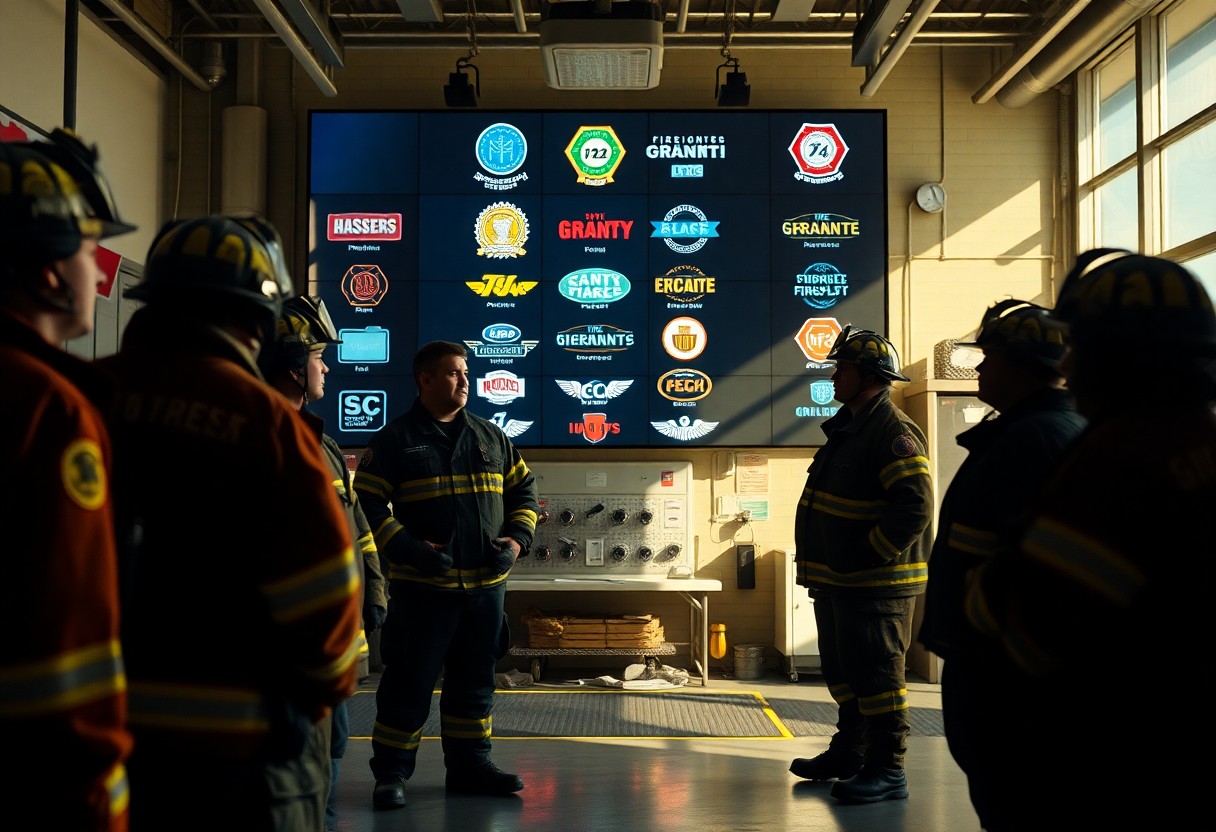There’s a wealth of funding opportunities available for your fire department beyond FEMA in 2025. As you navigate the landscape of grants, you’ll discover various non-FEMA options that can significantly enhance your department’s resources and capabilities. From enhancing equipment to improving training programs, these grants can offer critical support for your community’s safety efforts. Stay informed about the best non-FEMA grants to ensure you’re maximizing your funding options and positioning your department for success.
Key Takeaways:
- Explore funding from local and state governments, which often provide grants tailored specifically for emergency services, including fire departments.
- Investigate private foundations and nonprofit organizations that offer grants for fire safety initiatives, equipment upgrades, and community training programs.
- Utilize online resources and grant databases that aggregate non-FEMA funding opportunities to streamline the search process for your department.
Unveiling the Goldmine: The Top Non-FEMA Grant Opportunities
There are numerous non-FEMA grants that can be a goldmine for your fire department in 2025. These grants cater to various needs, including equipment upgrades, training programs, and community outreach initiatives. Exploring options like the Assistance to Firefighters Grant (AFG) and the Firehouse Subs Public Safety Foundation grant can significantly enhance your department’s operational capabilities while fostering community engagement. Taking the time to research and apply for these grants can yield substantial benefits with relatively low competition when compared to other funding sources.
Federal Grants Beyond FEMA: What’s Available?
Venturing beyond FEMA, several federal grants significantly benefit fire departments. Programs like the U.S. Department of Agriculture’s Rural Development grants focus on enhancing rural fire protection and funding equipment purchases. Additionally, the Department of Justice offers grants through the Community Oriented Policing Services (COPS) program, which can support fire/EMS collaboration with law enforcement.
State-Specific Funding: Navigating Local Resources
Each state hosts unique grant opportunities tailored to support local fire departments. Exploring these state-specific funding options can be profoundly advantageous. Funds may be available through state fire marshals, local government initiatives, or partnerships with non-profit organizations dedicated to public safety efforts—ensuring that you tap into resources that align with your department’s priorities and community needs.
Your journey toward accessing state-specific funding begins with understanding local priorities and engaging with relevant contacts. For instance, in California, the California Fire Foundation offers grant opportunities specifically focused on enhancing firefighter safety. In Texas, the Texas A&M Firefighters’ Training School provides solid funding avenues for training and educational programs. You should also keep an open line of communication with state fire councils or associations, as they often have the pulse on prevalent funding opportunities tailored to diverse community engagement projects.
Breaking Barriers: Unique Corporate Sponsorships and Foundations
Exploring corporate sponsorships and foundations can open up significant funding avenues for your fire department. Unlike traditional grant providers, these unique partnerships often allow for innovative community engagement opportunities, enabling your organization to forge beneficial connections while securing much-needed resources. By approaching local businesses or national corporations with a vested interest in community safety, you can create mutually beneficial relationships that yield financial support and enhance your operational capabilities.
Corporate Philanthropy: How Businesses Are Supporting Fire Departments
Many companies are stepping up to support fire departments through corporate philanthropy, providing funds, resources, and even volunteer labor. For example, a well-known supplier of fire equipment might offer discounted products or training resources, while local businesses could sponsor community events or help raise awareness for specific campaigns. These contributions not only alleviate financial pressures but also strengthen ties between your department and the community, ensuring a safer environment for everyone.
Foundation Grants: Tapping into Non-Profit Opportunities
Foundation grants represent a viable funding source that your fire department can leverage to meet its operational needs. Various charitable foundations exist to support public safety initiatives, often providing targeted appropriations based on specific project goals. For instance, the Firehouse Subs Public Safety Foundation allocates grants specifically for purchasing equipment and training initiatives, having awarded over $60 million since its inception. Don’t overlook the potential of local community foundations, which may offer grants that cater directly to your department’s unique challenges and objectives.
By tapping into foundation grants, you can align your fire department’s needs with the mission and vision of non-profit organizations committed to enhancing public safety. Many foundations prioritize support for initiatives that address specific issues like fire prevention education or equipment upgrades. Engaging in research to identify which foundations share your department’s values can lead to fruitful funding opportunities and partnerships. Crafting a compelling grant proposal that highlights your department’s impact on community safety can significantly increase your chances of securing critical funds.
The Importance of Community Engagement in Securing Grants
Effective community engagement can significantly enhance your fire department’s chances of securing grants. When your community understands the value and needs of your services, they become advocates, strengthening applications. By fostering relationships, you not only gain support but also present compelling narratives that demonstrate community impact, a key factor grantors look for. Engaged communities can mobilize resources, volunteer support, and public backing that are crucial in winning grants.
Building Strong Community Relationships for Grant Applications
Establishing strong relationships within your community lays the groundwork for successful grant applications. Attend local events, engage with residents on social media platforms, and collaborate with other local organizations. By effectively communicating your fire department’s missions and initiatives, you create a network of stakeholders who can contribute to your narrative and provide letters of support when required. Drawing on community participation helps paint a broader picture of your department’s importance and need for funding.
Case Examples: Successful Community Engagement Strategies
Several fire departments have successfully implemented innovative community engagement strategies to secure grants. For example, a small-town fire department partnered with local schools for fire safety education programs. This initiative not only garnered community support but also produced compelling evidence of need in their grant applications. Engaging with seniors through fire safety seminars led to increased local awareness and a stronger network for backup. Similar efforts have shown that authentic relationships elevate the story told in grant applications, making them more compelling to reviewers.
In a recent case, a mid-sized fire department developed a “Firefighters in the Community” program that involved regular interactions with local residents. This initiative included hosting open houses, participating in community fairs, and organizing neighborhood safety walks, leading to increased visibility and support for the department. As a result, this department successfully secured a significant grant focused on increasing local fire prevention efforts, showcasing how proactive community engagement can cultivate benefits beyond just funding. The relationship fostered created a lasting impact on both the department and the community it serves.
Crafting Winning Proposals: Best Practices for Grant Applications
Your grant proposals serve as the first impression, so crafting them thoughtfully is crucial. Focus on creating a clear narrative that illustrates your fire department’s goals and the impact of the requested funding. Tailor each proposal to align with the specific guidelines and objectives of the grant. Utilize data, anecdotes, and community support to demonstrate need and urgency, ensuring that your project stands out among countless applications.
Essential Elements of a Compelling Grant Proposal
A compelling grant proposal contains several key elements. Start with a strong executive summary that captures attention and clearly outlines your project’s objectives and benefits. Include a detailed budget justifying your funding needs, and a description of your department’s capabilities that showcases your experience and commitment. Be sure to incorporate letters of support from community stakeholders, illustrating broad backing for your initiative.
Common Pitfalls to Avoid in Grant Writing
Pitfalls in grant writing can derail even the most promising proposals. One major issue is failing to adhere to the funder’s guidelines regarding format and content. Incomplete or poorly organized proposals often lead to rejection. Additionally, avoid overgeneralizing your mission or project; specificity is key. Lastly, ignore vague language that lacks data or evidence—grants demand clarity, measurable outcomes, and a solid evaluation plan.
Many applicants overlook the importance of thoroughly reviewing funder requirements, which can lead to disqualification over minor infractions. Additionally, a loose narrative and the absence of concise, quantifiable goals can create doubt in your project’s feasibility. Requests for funding should be rooted in detailed plans that recognize funding limitations. Carefully proofreading your proposal also helps eliminate typos and errors that may undercut your professionalism. Your submission should be polished and ready for scrutiny to enhance your chances of approval.
Future Trends: Anticipating Changes in Fire Department Funding
As fire departments navigate the ever-evolving landscape of funding, staying ahead of future trends becomes imperative. You will likely see an increased emphasis on sustainability and community resilience in grant proposals, as funding bodies prioritize projects that demonstrate long-term benefits. Additionally, the impact of recent public health challenges may lead to more support for mental health resources within departments, further reshaping funding priorities.
Emerging Grant Opportunities for 2026 and Beyond
Looking ahead, potential grant opportunities are likely to arise from increased federal and state funding initiatives focused on climate change and disaster response. As natural disasters become more frequent, funding directed towards wildfire prevention, emergency response, and equipment upgrades will likely see significant growth. Connecting with local government agencies and environmental organizations can unveil unique partnerships and funding streams that align with these emerging priorities.
The Role of Technology in Grant Acquisition
Utilizing technology can greatly enhance your grant acquisition strategy, streamlining processes and expanding your reach. Online platforms allow you to connect with a broader array of funding sources and keep track of upcoming grant opportunities effectively. Utilizing software tools for proposal writing can also improve efficiency, helping you create more compelling applications that stand out to funders. With the power of data analytics, you can tailor your grant proposals to better align with the interests and requirements of prospective funders.
Incorporating technology into your grant acquisition efforts enables you to not only research potential funding sources more efficiently but also to analyze submissions and outcomes. This insight can lead to improved future applications by identifying what works and what doesn’t in your writing approach. For example, adopting cloud-based collaboration tools can facilitate input from various team members, enhancing your proposals through diverse expertise. Leveraging technology strategically places you in a stronger position to secure necessary funding for your fire department’s needs.
Summing up
Considering all points, you should explore various non-FEMA grants available for fire departments in 2025, such as the Assistance to Firefighters Grant (AFG) Program, the Firehouse Subs Public Safety Foundation Grant, and local community foundations that support fire services. These funding sources can significantly enhance your department’s resources and capabilities. Thorough research and application preparation will be vital in making the most of these opportunities, ensuring you effectively meet the needs of your community.



